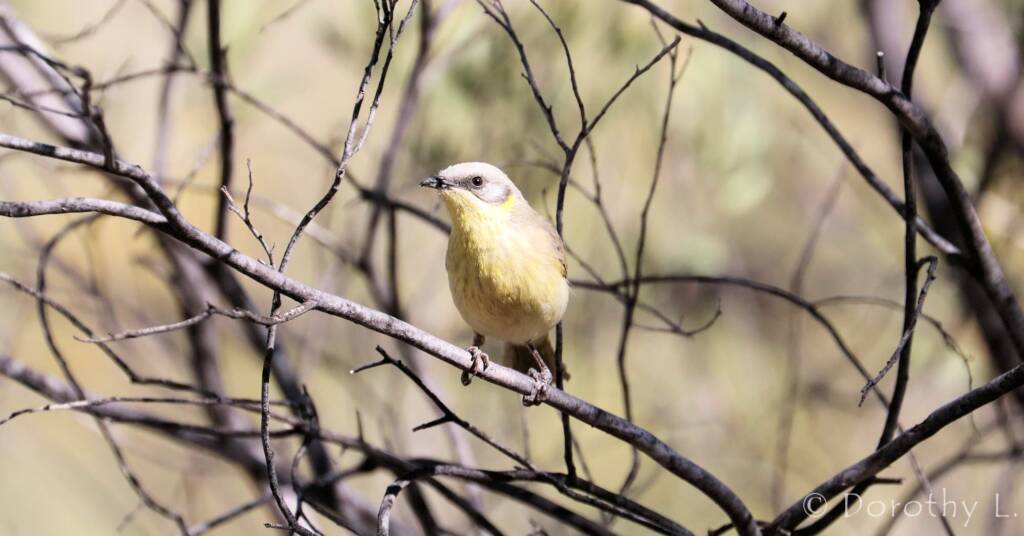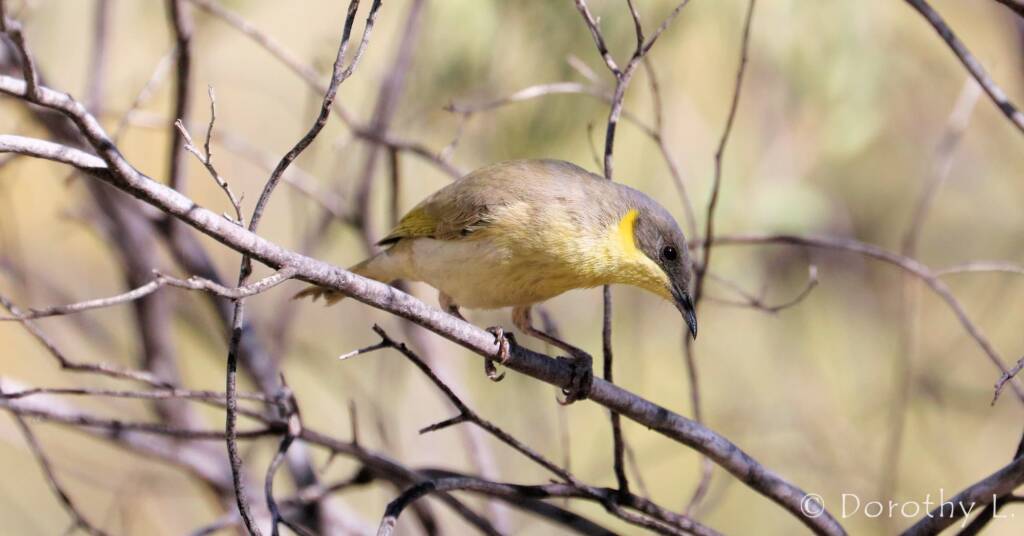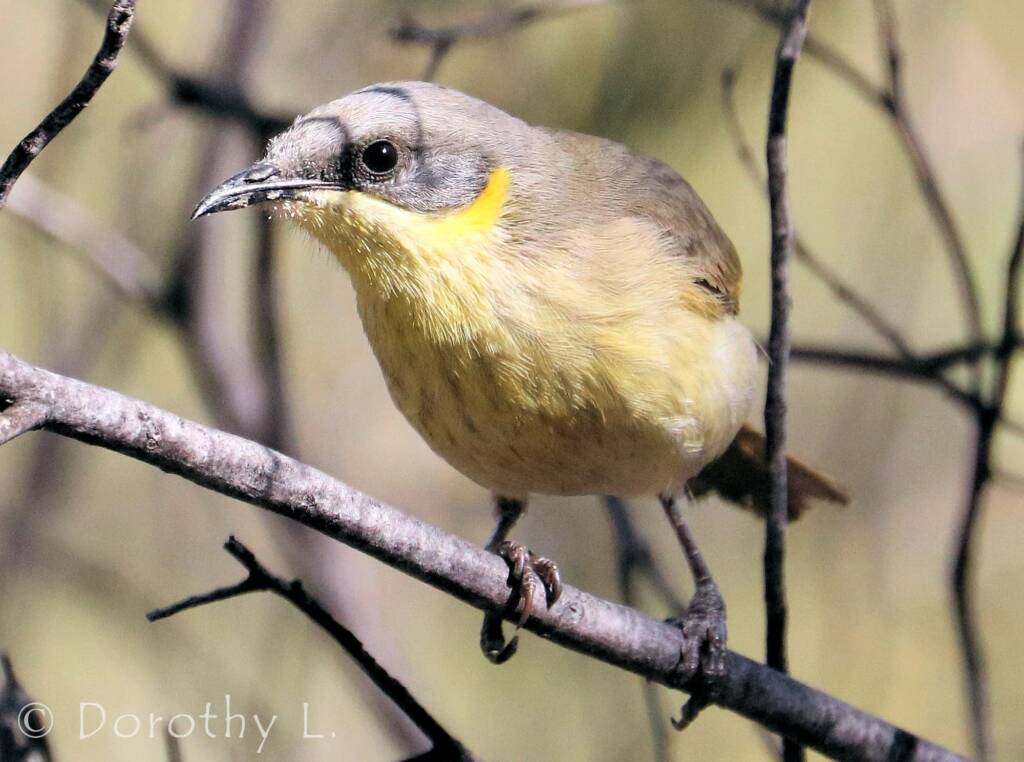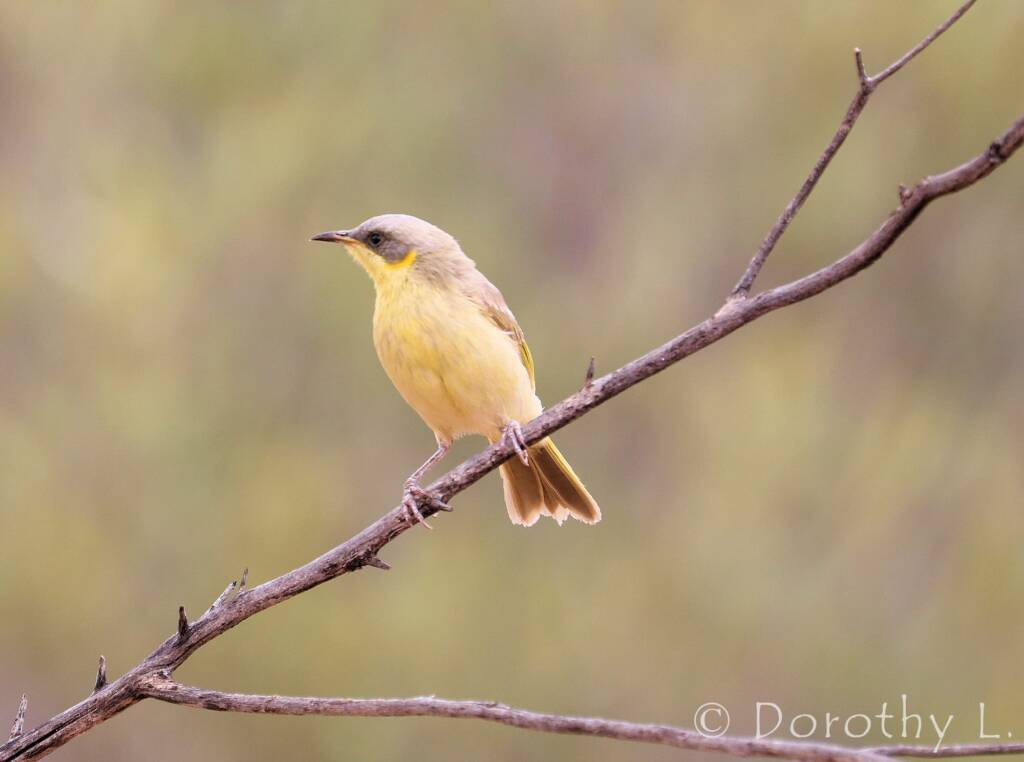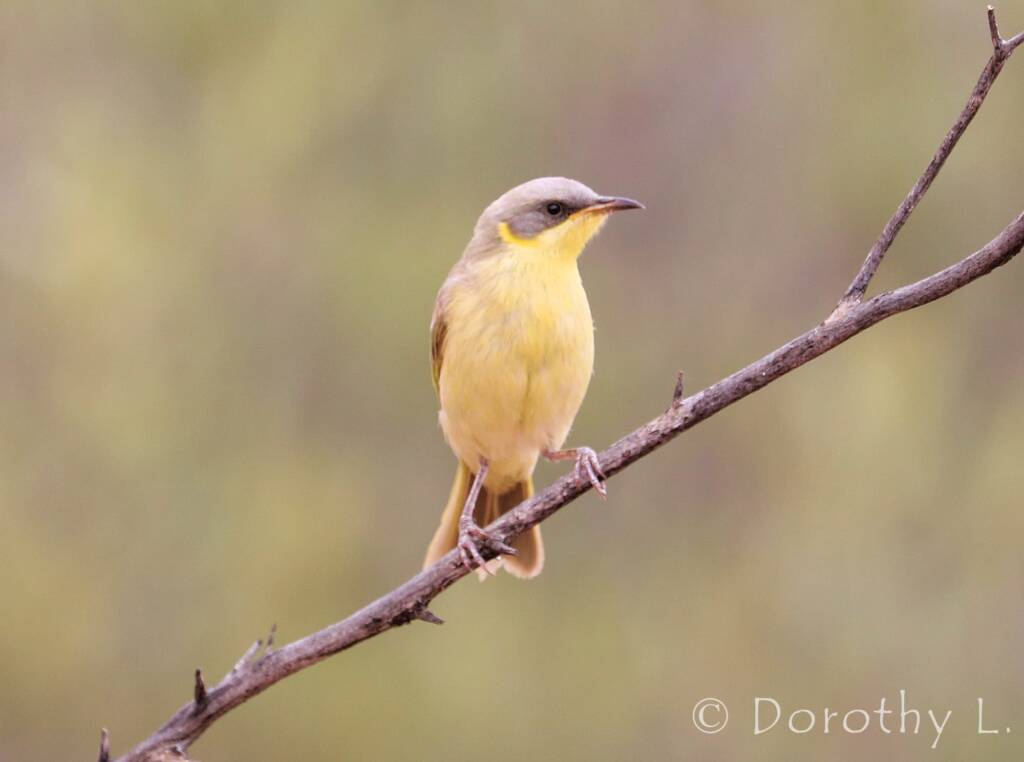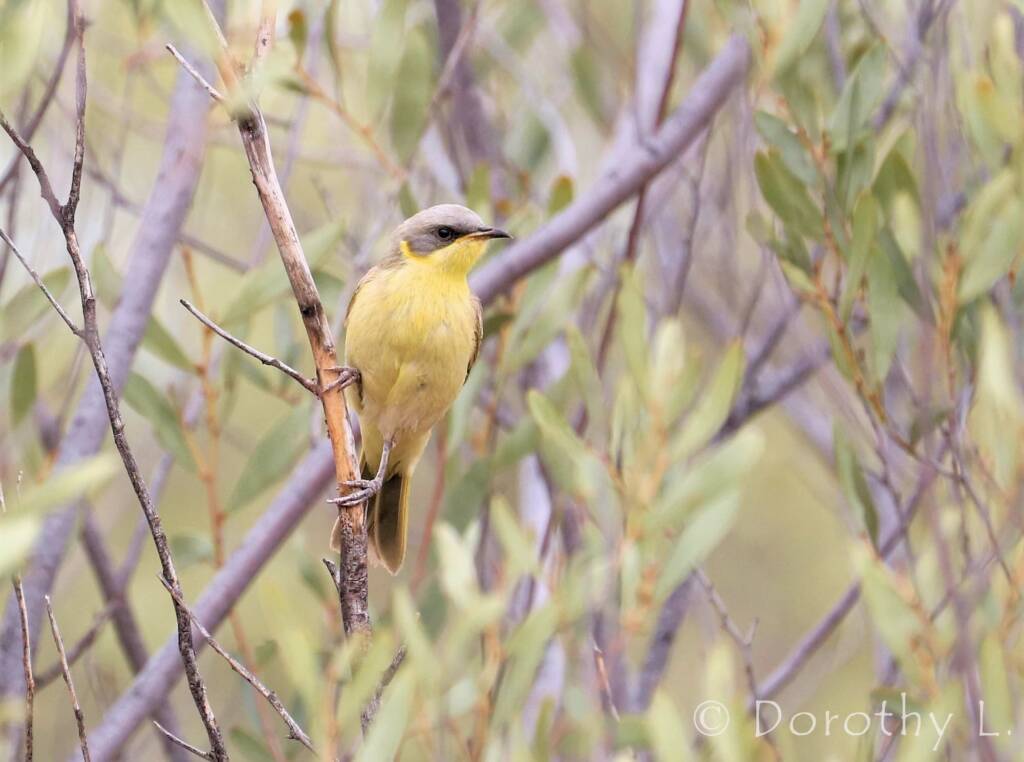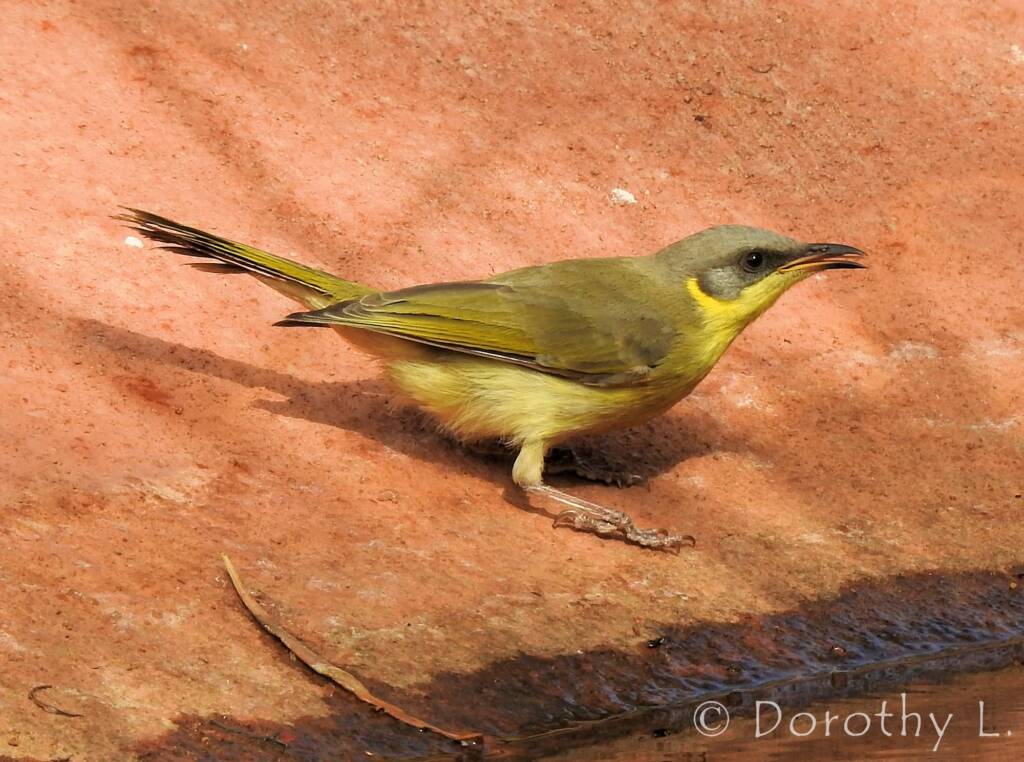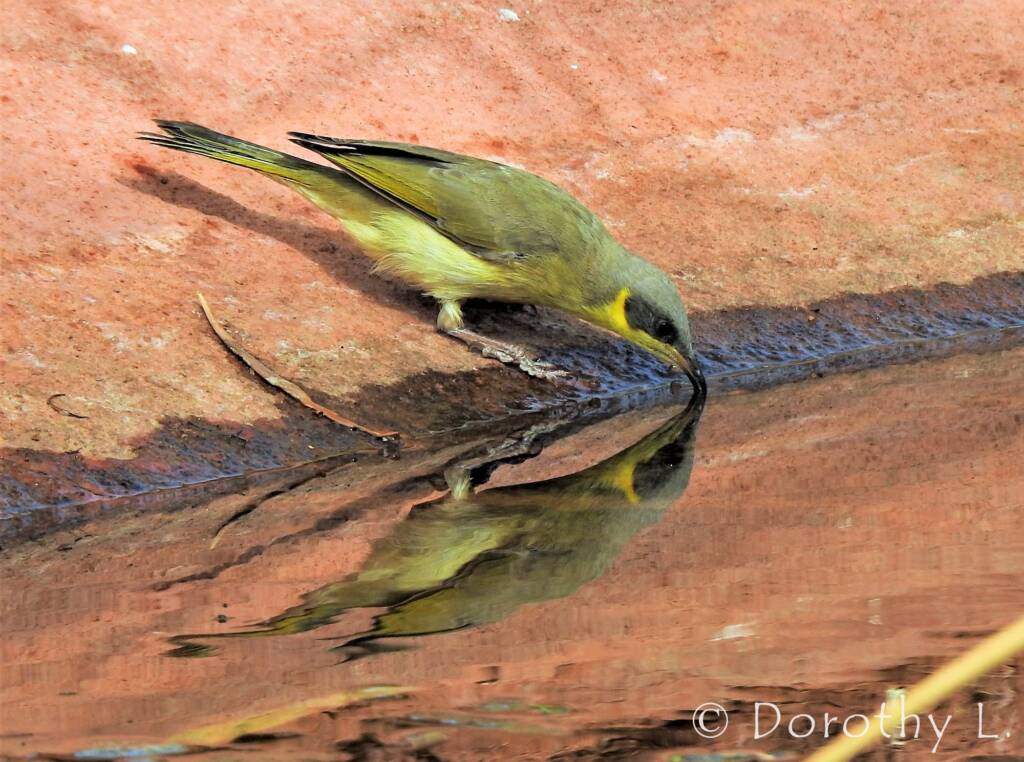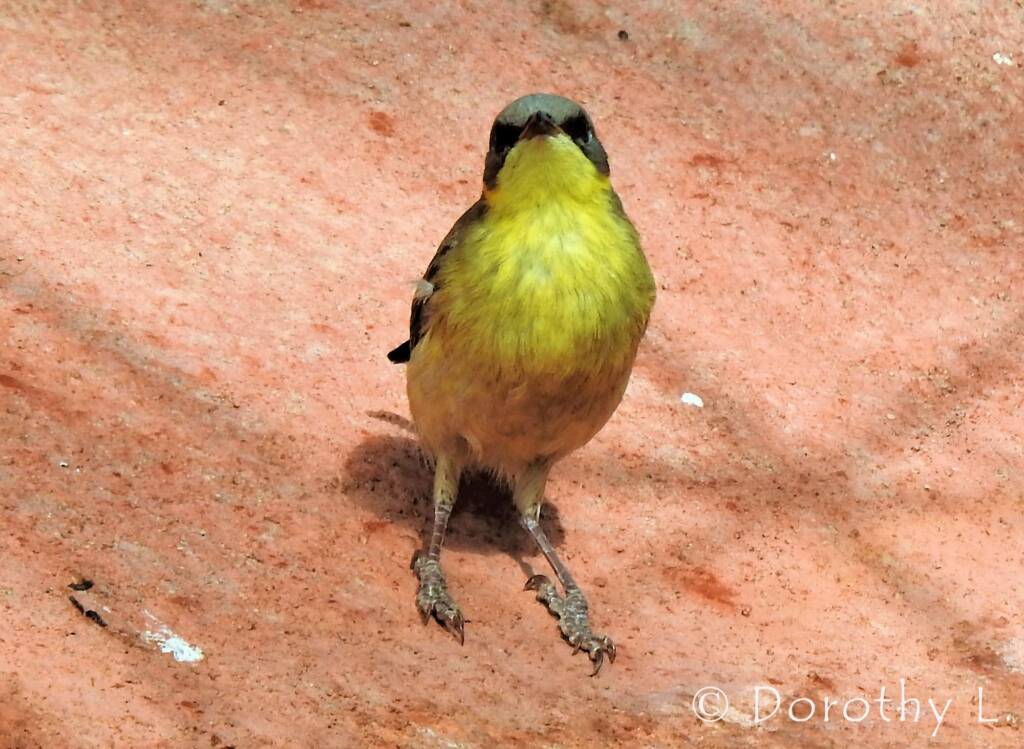HoneyeatersBlue-faced Honeyeater Brown Honeyeater Brown-headed Honeyeater Crescent Honeyeater Eastern Spinebill Grey-fronted Honeyeater Grey-headed Honeyeater New Holland Honeyeater Noisy Miner Pied Honeyeater Red Wattlebird Scarlet Honeyeater Singing Honeyeater Spiny-cheeked Honeyeater White-plumed Honeyeater Yellow-throated Miner Yellow-tinted Honeyeater Yellow-tufted Honeyeater
The Grey-headed Honeyeater (Ptilotula keartlandi) is a medium-sized honeyeater that is endemic to Australia and a member of the genus Ptilotula, whose species are found in a wide range of environments including shrubby woodland, forest, arid and semi-arid habitats. There range rugged gullies and rocky areas of northern inland Australia, particularly across the Pilbara in Western Australia, through western interior, Central Australia and across to north-western Queensland region.
An olive brown bird, with yellow and a diffuse grey streaking below. It has a distinctive grey crown and dark grey cheek patch that is bordered with a bright yellow plume that extends below and behind the ear coverts. The breast, belly, flanks and throat are a light olive-yellow streaked, with brown colour. The rump is light grey-brown in colour. The flight feathers of the bird are olive-brown and edged with olive-yellow. The tail feathers are a darker olive-brown and edged in olive-yellow. The bill is short with a slight down-curve. The bill is black and has a yellowish base on the lower mandible, that usually becomes black during the breeding season.
The juvenile birds have similar plumage to adults, although they are generally paler, have a lighter grey-brown face mask and a lighter grey crown. The juveniles have a grey-black bill with an orange-brown base.
It is thought they breed mainly during winter / spring, although they are known to breed following good rainfall. The nests are built low in shrubs / trees. They have a compact, cup-shaped structure and made from dried plant material, including grass and bark bound by spiders webs. The nests are lined with feathers and animal hair.
They usually have two eggs, oval, white/pink in colour and unmarked or with light brown / purple spots.

As with many honeyeaters, the Grey-headed Honeyeater feed on nectar from flowering trees, including hakeas, eucalypts, grevilleas and mallee. They have been seen feeding on nectar from wild-passion fruit and occasionally eat fruit. They also eat invertebrates, have been seen taking insects on the wing.
The call of the bird include a variety of chirruping rolling whistles, a loud single squawk, and short yelps.
- Scientific classification
- Kingdom: Animalia
- Phylum: Chordata
- Class: Aves
- Order: Passeriformes
- Family: Meliphagidae
- Genus: Ptilotula
- Species: P. keartlandi
- Binomial name: Ptilotula keartlandi

HoneyeatersBlue-faced Honeyeater Brown Honeyeater Brown-headed Honeyeater Crescent Honeyeater Eastern Spinebill Grey-fronted Honeyeater Grey-headed Honeyeater New Holland Honeyeater Noisy Miner Pied Honeyeater Red Wattlebird Scarlet Honeyeater Singing Honeyeater Spiny-cheeked Honeyeater White-plumed Honeyeater Yellow-throated Miner Yellow-tinted Honeyeater Yellow-tufted Honeyeater


